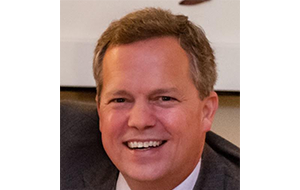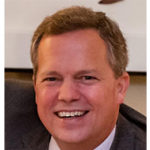Fiserv is a large company, with 22,000 employees, that creates the technology behind many of the financial services applications we all use every day for tasks like mobile and online banking and payments. Given its technology focus, nearly half of its employees are responsible for IT delivery in one form or another.
And given its focus on the financial services industry, the company is square in the middle of the trend toward faster and faster application delivery. Like many other vertical industries, financial institutions are dealing with consumers who now expect to be able to do business from any device, at any time, says Brian Sondergaard, CIO for digital channels at Fiserv. But he’s not keeping up by just throwing more resources at the problem, a point he makes clear in the first of our two-part Q&A series.

The Enterprisers Project (TEP): If demands or expectations are increasing, what about access to resources – has that changed, or do you have to use existing resources?
 Sondergaard: Traditionally in IT, when confronted with a greater demand for applications and the need to deliver them more quickly, the first natural response is to get more resources. I think that’s a mistake. We have so much capacity in our organizations that we have not used in the best way possible. If we start by significantly improving performance in terms of outcomes that are relevant to clients and the business, we can find ways to tap into vastly more capacity than we thought we had. Then we can deploy it against the most important things.
Sondergaard: Traditionally in IT, when confronted with a greater demand for applications and the need to deliver them more quickly, the first natural response is to get more resources. I think that’s a mistake. We have so much capacity in our organizations that we have not used in the best way possible. If we start by significantly improving performance in terms of outcomes that are relevant to clients and the business, we can find ways to tap into vastly more capacity than we thought we had. Then we can deploy it against the most important things.
TEP: How did you get more out of the people you already have?
Sondergaard: By deploying enterprise agile across the board. The most important work does not happen in traditional organizational silos within the typical hierarchy. We have to think horizontally about what’s of value to clients. Look at performance through the eyes of customers. When we do that, we can break down silos and bring people together to collaborate for shared outcomes. They can agree to goals that everybody will pursue together. It spans from portfolios, through products or programs, through delivery. It has to be an intentional, organizational process design across all three of those layers, integrated in a way that enables them to be responsive and productive.
TEP: How is that different from the traditional mindset?
Sondergaard: Traditionally you might have different silos that measure their performance in independent, disconnected ways. You can have excellent product management performance, but if that performance is not measured according to revenue growth and client satisfaction, then product management can get disconnected from the reality of the fulfillment of the business. The same goes for development. You can write the best code, but what’s important is the degree to which it is benefiting our clients. It’s easy to fall into the trap of local optimization vs. genuine performance improvement in the context of things that matter to the business.
By flipping it from these vertical silos of function to a horizontal, end-to-end flow of people working together against a common shared purpose, we’re able to capture greater capacity and improve performance. That’s the biggest thing to me that changed in agile: we broke the silos and created teams of people who work together for a shared purpose. That’s what agile means to me.
While agile has done a fantastic job of bringing product management and development together and helping them to understand they have the same shared goals and purpose, we’ve now begun the next phase of improvement in how we handle delivery in IT. The industry is labeling this DevOps. From a cultural standpoint, it’s the same thing. It’s collapsing silos and getting people who traditionally handed things off to one another and operated in their spheres of influence to take down the walls, come together, and agree on what measurable progress looks like and what their purpose is. Finally, we optimize how they do things to maximize performance for the business and our clients.








